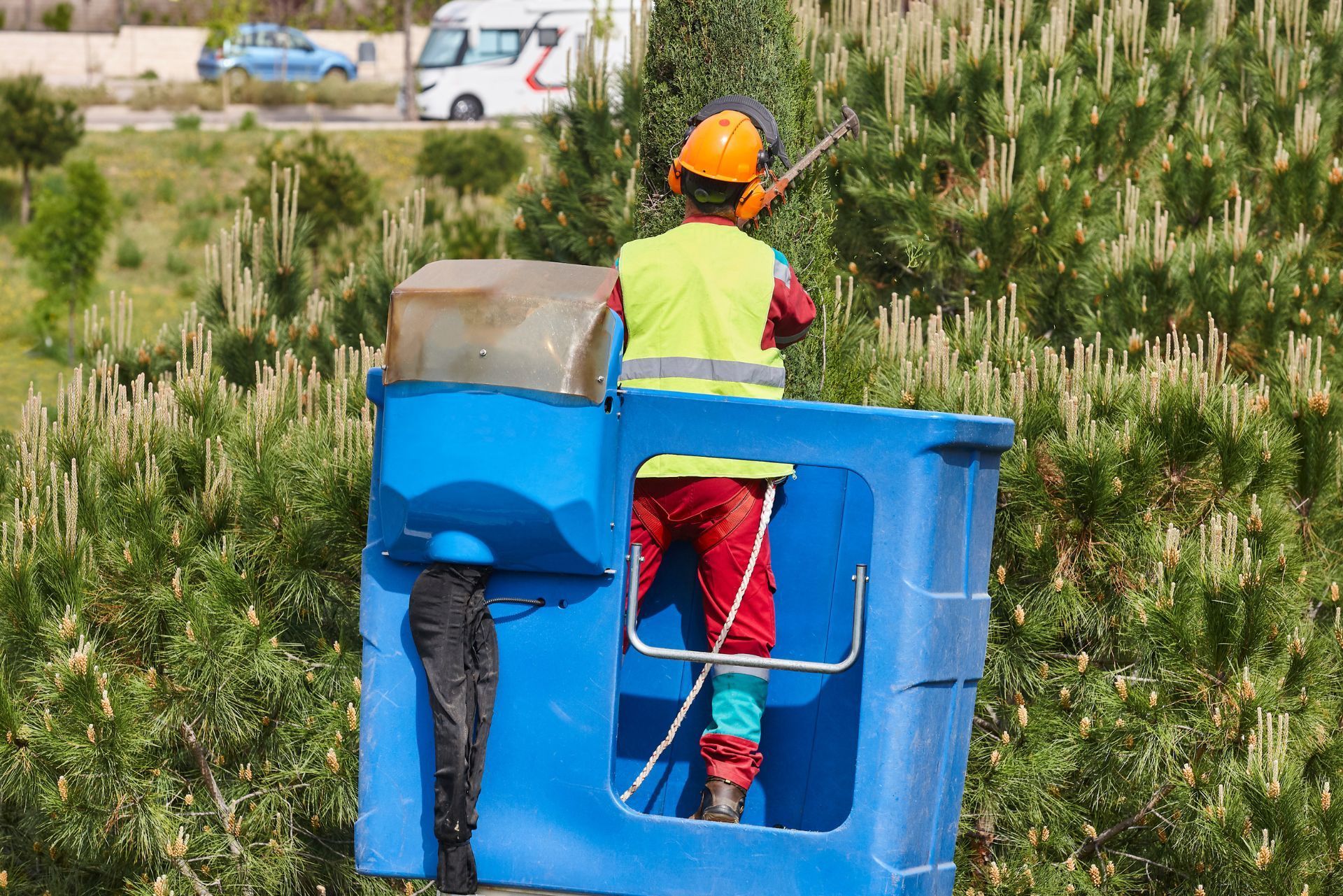Top 3 Recommended Policies

Tree trimming is an essential service for maintaining the health and aesthetics of trees in urban and suburban areas. However, it comes with its own set of risks and liabilities. For tree trimming businesses operating in New York, obtaining the right insurance coverage is crucial to protect against potential accidents, property damage, and other unforeseen events. This article delves into everything you need to know about tree trimming insurance in New York, covering its importance, types of coverage, costs, and more.
Understanding the Importance of Tree Trimming Insurance
Tree trimming can be a hazardous job. Workers often operate at heights, use sharp tools, and work in unpredictable weather conditions. Because of these factors, having adequate insurance coverage is not just a recommendation; it’s a necessity.
Protection Against Liability
Liability insurance protects tree trimming businesses from claims made by clients or third parties. If a worker accidentally damages property or injures someone while performing tree trimming services, liability insurance can cover legal fees, medical expenses, and any damages awarded in a lawsuit. This coverage is essential for safeguarding a business's financial stability. Additionally, liability insurance can enhance a company's reputation, as clients are more likely to trust businesses that are fully insured. It provides peace of mind for both the service provider and the customer, knowing that there is a safety net in place should an unfortunate incident occur.
Employee Safety and Workers' Compensation
In New York, employers are required to provide workers' compensation insurance for their employees. This insurance covers medical expenses and lost wages for workers who are injured on the job. Tree trimming is inherently risky, and having workers' compensation insurance not only complies with state law but also demonstrates a commitment to employee safety and well-being. Furthermore, investing in comprehensive safety training programs can significantly reduce the likelihood of accidents, which in turn can lead to lower insurance premiums over time. By fostering a culture of safety, businesses can protect their most valuable asset—their employees—while also enhancing productivity and morale.
Property Damage and Equipment Coverage
In addition to liability and workers' compensation insurance, tree trimming businesses should also consider property damage and equipment coverage. This type of insurance protects against damages to tools and machinery used in the tree trimming process, which can be quite costly to replace. For instance, if a chainsaw is damaged during a job, the business may face significant downtime and repair costs. Having the right coverage ensures that the company can quickly replace or repair equipment, minimizing disruptions to their operations. Moreover, this coverage can extend to damage caused to a client's property during the trimming process, providing an extra layer of protection and fostering trust between the service provider and their clients.

Types of Insurance Coverage for Tree Trimming Businesses
Tree trimming businesses in New York should consider various types of insurance coverage to ensure comprehensive protection. Each type addresses different risks associated with the industry.
General Liability Insurance
General liability insurance is the cornerstone of any tree trimming business's insurance portfolio. It covers claims related to bodily injury, property damage, and personal injury. For instance, if a tree trimmer accidentally damages a client's property while performing their work, general liability insurance can help cover the costs associated with repairs or legal claims. Additionally, this insurance can also protect against claims of negligence, which can arise if a client feels that the work performed did not meet industry standards or caused unintended harm. This layer of protection not only safeguards the business financially but also helps maintain a professional reputation in a competitive market.
Commercial Auto Insurance
For businesses that use vehicles to transport equipment or staff to job sites, commercial auto insurance is essential. This type of insurance covers damages and liability related to vehicles used for business purposes. It protects against accidents that may occur while driving to or from a job site, ensuring that both the vehicle and the driver are covered. Furthermore, commercial auto insurance can also provide coverage for uninsured or underinsured motorists, which is particularly important in urban areas where accidents are more frequent. This comprehensive coverage ensures that tree trimming businesses can operate without the looming threat of financial loss due to vehicle-related incidents.
Equipment Insurance
Tree trimming requires specialized equipment, from chainsaws to chippers. Equipment insurance protects against loss, theft, or damage to these essential tools. Given the high cost of tree trimming equipment, having this coverage can save a business from significant financial setbacks in the event of an incident. Moreover, many tree trimming businesses rely on a variety of tools that may not only be expensive but also critical to their day-to-day operations. This insurance can also cover rental costs for replacement equipment while repairs are being made, ensuring that the business can continue to operate smoothly without interruption. Additionally, some policies may even cover equipment that is temporarily stored on job sites, providing peace of mind that the investment in tools is safeguarded against unforeseen circumstances.
Cost of Tree Trimming Insurance in New York
The cost of insurance for tree trimming businesses can vary widely based on several factors, including the size of the business, the number of employees, the types of coverage selected, and the overall risk profile of the company.
Factors Influencing Insurance Premiums
Several elements can influence the premiums a tree trimming business will pay for insurance. These include:
- Business Size: Larger businesses with more employees and equipment typically face higher premiums due to increased risk exposure.
- Claims History: A history of claims can lead to higher premiums, as insurers view these businesses as higher risk.
- Location: The specific area in New York where the business operates can impact costs, with urban areas often facing higher premiums due to increased liability risks.
Average Costs
While it’s challenging to pinpoint an exact figure for tree trimming insurance costs, businesses can expect to pay anywhere from a few hundred to several thousand dollars annually, depending on their specific circumstances. It’s advisable to obtain quotes from multiple insurance providers to find the best coverage at a competitive rate.
In addition to the basic liability coverage, many tree trimming companies may opt for additional policies such as workers' compensation, which is crucial for protecting employees in case of on-the-job injuries. Given the nature of tree trimming work, which often involves heights and heavy machinery, having adequate workers' compensation can significantly affect overall insurance costs. Furthermore, businesses should consider coverage for equipment and tools, as these can be expensive to replace if damaged or stolen, adding another layer of financial protection.
Another aspect to consider is the seasonal nature of tree trimming work, which can lead to fluctuations in insurance needs throughout the year. For instance, during peak seasons, businesses may require more coverage due to increased job volume and the associated risks. Conversely, during off-peak times, they might explore temporary reductions in coverage to save on costs. Understanding these dynamics can help tree trimming businesses navigate their insurance needs more effectively, ensuring they are adequately covered without overextending their budgets.
Choosing the Right Insurance Provider
Finding the right insurance provider is crucial for tree trimming businesses. With numerous options available, it’s essential to evaluate potential insurers based on several criteria.
Reputation and Experience
When selecting an insurance provider, consider their reputation in the industry. Look for companies that specialize in coverage for tree care or landscaping businesses, as they will have a better understanding of the unique risks involved. Reading customer reviews and seeking recommendations can provide valuable insights into an insurer's reliability and service quality. Additionally, it may be beneficial to check if the provider has received any industry awards or recognitions, which can further validate their standing in the market. Engaging with local tree care associations or forums can also yield personal experiences from peers, helping you to make a more informed decision.
Coverage Options and Customization
Not all insurance policies are created equal. It’s important to choose a provider that offers customizable coverage options to meet the specific needs of a tree trimming business. This flexibility can help ensure that all potential risks are adequately covered. For instance, consider whether the provider offers specialized coverage for equipment damage, liability for accidents on job sites, or even coverage for environmental damage caused during tree removal. Additionally, some insurers may offer bundled packages that can provide comprehensive protection at a more affordable rate, which can be particularly advantageous for small businesses looking to manage costs effectively.
Customer Service and Support
Insurance is a complex field, and having access to knowledgeable customer service representatives can make a significant difference. Choose a provider that offers excellent support, allowing business owners to ask questions and receive guidance when needed. It's also wise to assess the availability of support channels, such as phone, email, or live chat, to ensure that assistance is readily accessible. Furthermore, consider whether the provider offers educational resources or tools, such as online policy management or risk assessment guides, which can empower business owners to make informed decisions about their coverage and safety practices. This proactive approach not only enhances the customer experience but also fosters a long-term relationship built on trust and reliability.
Common Exclusions in Tree Trimming Insurance
While insurance provides essential protection, it’s important to be aware of common exclusions that may apply to tree trimming policies. Understanding these exclusions can help business owners avoid unexpected gaps in coverage. Tree trimming can be a risky endeavor, and having a clear grasp of what is and isn’t covered can safeguard your business from financial pitfalls.
Pre-Existing Conditions
Insurance policies typically do not cover pre-existing conditions. For example, if a tree has been previously damaged and the trimming work exacerbates the issue, the insurer may deny a claim related to that incident. It’s crucial to conduct thorough assessments of trees before beginning work to avoid potential disputes. Additionally, documenting the condition of trees with photographs and written reports can serve as valuable evidence should a claim need to be filed later. This proactive approach not only helps in maintaining transparency with insurers but also reinforces the professionalism of your business.
Negligence or Poor Practices
If a business is found to be negligent or engaging in unsafe practices, claims may be denied. This emphasizes the importance of following industry best practices and safety guidelines to ensure that all work is performed professionally and safely. Training employees in proper techniques and ensuring they are equipped with the right tools can significantly reduce the risk of accidents. Moreover, maintaining a clean and organized worksite can prevent injuries and demonstrate a commitment to safety, which can be beneficial if a claim arises. Regular safety audits and refresher courses can also help in cultivating a culture of safety within the team, ultimately leading to better outcomes for both the business and its clients.

Best Practices for Tree Trimming Businesses
To minimize risks and ensure smooth operations, tree trimming businesses should adopt best practices that enhance safety and efficiency.
Regular Training and Certification
Investing in regular training and certification for employees is essential. This not only helps ensure that workers are knowledgeable about safety protocols and equipment usage but also demonstrates a commitment to professionalism. Many insurance providers may offer lower premiums for businesses that prioritize employee training. Furthermore, ongoing education can keep employees updated on the latest industry standards and innovations, such as new trimming techniques or advancements in safety gear. This not only boosts employee morale but also enhances the overall quality of service provided to clients.
Conducting Risk Assessments
Regular risk assessments can help identify potential hazards associated with tree trimming operations. By proactively addressing these risks, businesses can reduce the likelihood of accidents and improve their overall safety record, which can positively impact insurance premiums. Additionally, involving employees in the risk assessment process can foster a culture of safety and responsibility. Workers on the ground often have valuable insights into potential hazards, and their involvement can lead to more comprehensive safety strategies. Implementing a feedback loop where employees can report near-misses or unsafe conditions can further enhance the effectiveness of these assessments.
Utilizing Proper Equipment
Equipping employees with the right tools and safety gear is another critical aspect of running a successful tree trimming business. High-quality, well-maintained equipment not only improves efficiency but also minimizes the risk of accidents. Businesses should regularly inspect and replace tools and safety gear, such as helmets, gloves, and harnesses, to ensure they meet safety standards. Additionally, providing employees with training on how to properly use and maintain their equipment can extend the life of the tools and enhance overall job performance. This investment in quality equipment and training can lead to higher customer satisfaction, as clients appreciate the professionalism and care that comes with using the best tools for the job.
Filing a Claim: What to Expect
In the unfortunate event of an incident, knowing how to file a claim can streamline the process and ensure that businesses receive the necessary support. Understanding the steps involved can alleviate some of the stress associated with unexpected events, allowing business owners to focus on recovery and continuity.
Documenting the Incident
Thorough documentation is crucial when filing an insurance claim. This includes taking photos of the scene, collecting witness statements, and keeping detailed records of any damages or injuries. The more information provided, the smoother the claims process will be. Additionally, it is wise to create a timeline of events leading up to and following the incident, as this can provide context that may be beneficial during the claims review. Keeping receipts for any immediate expenses incurred as a result of the incident, such as temporary repairs or medical costs, can also bolster the claim and ensure that all relevant costs are accounted for.
Contacting the Insurance Provider
Once the incident has been documented, the next step is to contact the insurance provider. Most companies have a dedicated claims department that can guide business owners through the process. Providing all necessary documentation upfront can expedite the claim review and approval process. It’s also important to familiarize oneself with the specific terms of the policy, as coverage can vary widely. During this communication, business owners should ask questions about the claims process, including timelines for review and any additional information that may be required. Establishing a clear line of communication with the claims adjuster can help ensure that any issues are promptly addressed and that the claim moves forward without unnecessary delays.
Conclusion
Tree trimming insurance is an essential aspect of operating a tree care business in New York. By understanding the various types of coverage available, the costs involved, and the best practices for minimizing risks, business owners can protect their investments and ensure the safety of their employees and clients. Investing in the right insurance not only safeguards against potential liabilities but also fosters a professional image that can attract more clients in this competitive industry.
In the dynamic world of tree trimming, having a solid insurance plan in place is more than just a safety net; it’s a vital component of a successful business strategy. Whether you are just starting or have been in the industry for years, taking the time to evaluate your insurance needs can pay off in the long run.
Contact Us
Phone
Location

